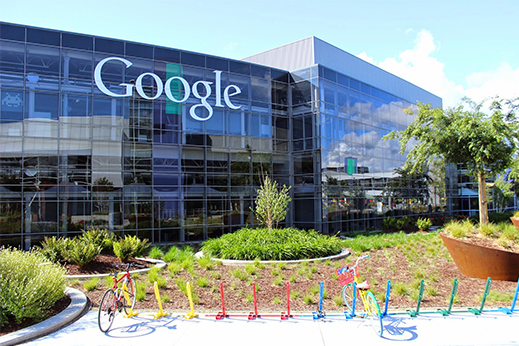Alphabet Prepares to Spend More on Its Riskiest Projects
Alphabet, the parent company recently created to keep Google’s core business separate from wilder enterprises such as self-driving cars, is preparing to ramp up spending on its most far-out projects.

That’s what Alphabet’s chief financial officer, Ruth Porat, said Thursday on the company’s first quarterly earnings call. The most significant increase will come from the division of Alphabet working on technologies related to energy and Internet access, she said, which includes the Google Fiber project that offers high-speed, low-cost broadband in several U.S. cities.
Because Alphabet only sprang into legal existence early this month, Thursday’s call was mostly taken up with discussion of results reported by Google’s original structure, which reported a larger-than-expected profit of $4.7 billion on $18.7 billion in revenue. But Porat also said that henceforth Alphabet will report revenues, profitability, and capital expenditures for both Google and a category dubbed “other bets” that combines the company’s other businesses.
Google cofounder Larry Page, now the CEO of Alphabet, said previously that the creation of Alphabet is intended to allow the company to more easily use new technologies to tackle major problems in the world and make money along the way (see “What Will Alphabet Be When It Grows Up?”). Page did not speak on today’s call. Sundar Pichai, the new head of the Google business unit inside Alphabet, did, but left all discussion of Alphabet to Porat.
Alphabet has not yet publicly offered a detailed listing of all its subsidiaries. Porat said Thursday that the company’s “other bets” are expected to include home devices company Nest, Google’s X lab that works on projects such as self-driving cars, a life sciences group where projects include an electronic contact lens, and Google’s investment arms.
Porat also listed a unit called “Access and Energy,” apparently a reference to the portfolio of the same title overseen by senior vice president Craig Barratt. He has led the Google Fiber project that has rolled out low-cost, high-speed broadband access in several U.S. cities, and forced existing providers to improve their pricing and technology (see “The Wait-For-Google-To-Do-It Strategy”).
Porat cautioned investors that capital expenditures by the other bets would be increasing through next year, with spending in Access and Energy rising most.
She said that the unit includes “other efforts” besides the Fiber project but didn’t detail what those might be. Alphabet’s other known projects relevant to the unit include Project Loon, which uses stratospheric balloons to deliver cellular Internet in rural areas of the world, and resides inside the separate X Labs group, the new name for Google X, where it began. Another project involves solar-powered drones to provide wireless data access. The original Google has long invested in a range of renewable-energy and energy-efficiency projects.
Porat also suggested Thursday the number of projects and divisions under Alphabet’s “other bets” designation could expand.
“What we want with Alphabet is to be the best magnet for entrepreneurs,” she said. “To be the environment where they can continue to thrive and create businesses that can generate tremendous returns and solve really big problems.”
This story was updated at October 23 after Google confirmed that Project Loon is part of Alphabet’s X Labs group.
Keep Reading
Most Popular
Large language models can do jaw-dropping things. But nobody knows exactly why.
And that's a problem. Figuring it out is one of the biggest scientific puzzles of our time and a crucial step towards controlling more powerful future models.
The problem with plug-in hybrids? Their drivers.
Plug-in hybrids are often sold as a transition to EVs, but new data from Europe shows we’re still underestimating the emissions they produce.
Google DeepMind’s new generative model makes Super Mario–like games from scratch
Genie learns how to control games by watching hours and hours of video. It could help train next-gen robots too.
How scientists traced a mysterious covid case back to six toilets
When wastewater surveillance turns into a hunt for a single infected individual, the ethics get tricky.
Stay connected
Get the latest updates from
MIT Technology Review
Discover special offers, top stories, upcoming events, and more.